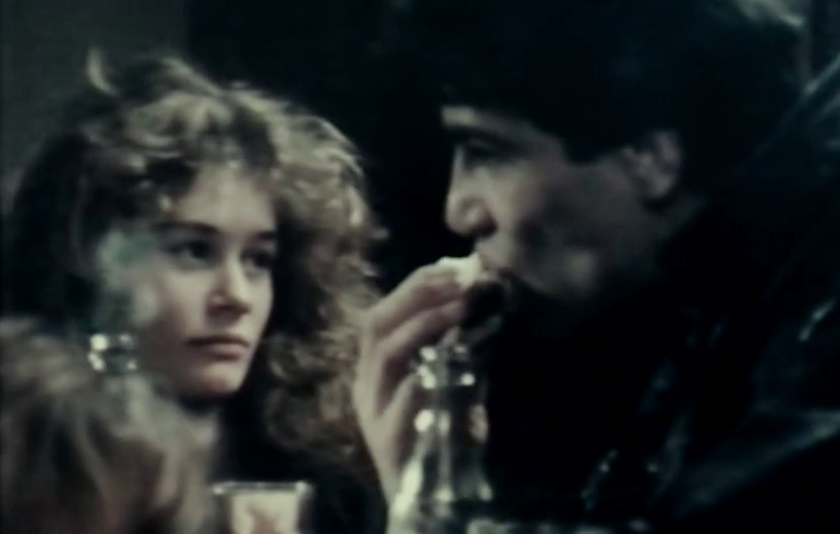Mondo Hollywood: Hollywood Laid Bare! [Mondo Hollywood] (Robert Carl Cohen, 1967)
Nov
1
World Vegan Day

Lobby card. Proto-hippie Gypsy Boots (Robert Bootzin), here going ape over a banana, outshocks polite society with his vegan (or is this vegetarian?) mindset. In the background what appears to be a bed of nails. DP: Robert Carl Cohen.
Opens with Nature Boy and #garlic propagandist Gypsy Boots.
瘋癲老人日記 [Fūten rōjin nikki / Diary of a Mad Old Man] (Keigo Kimura, 1962)
Oct
29
World Stroke Day

Utsugi (Sō Yamamura) lusting after his daughter-in-law Sachiko's (Ayako Wakao) feet while she takes a shower. DP: Nobuo Munekawa.
みな殺しの霊歌 [Minagoroshi no reika / I, the Executioner] (Tai Katō, 1968)
Oct
26

A claustrophobically framed black-and-white shot of a man (Makoto Satō) handling chopsticks close to his face. DP: Keiji Maruyama.
– What's that?
– Tea.X the Unknown (Leslie Norman + Joseph Losey, 1956)
Oct
24
scoff

Two soldiers on nightshift ready to eat. One of them hands a mess tin with grub to the other when there's a sound. DP: Gerald Gibbs.
“Any resemblance between HELLZAPOPPIN’ and a motion picture is purely coincidental”Hellzapoppin' (H.C. Potter, 1941)
Oct
24
National Crazy Day

Olsen and Johnson break all the walls. DP: Elwood Bredell.
– tagline
“Nur ein leichtfertig Knechtlein, dem es gleichgültig war, regne oder sonnenscheine es in der Ernte, wenn nur das Jahr umging und der Lohn kam und zu jeder Essenszeit das Essen auf den Tisch, griff zum Löffel und berichtete Christine, daß noch keine Buche gepflanzet sei und alles gehe, als ob sie verhext wären.”Die schwarze Spinne [The Black Spider] (Mark M. Rissi, 1983)
Oct
20

Christine (Beatrice Kessler) and her junkie friends eating the old man's food. DP: Edwin Horak.
– Jeremias Gotthelf, Die schwarze Spinne (1842)
The Leather Boys (Sidney J. Furie, 1964)
Oct
17
National Motorcycle Ride Day

Pete (Dudley Sutton) in his black leather tiger jacket waiting for Reggie (Colin Campbell). He leans against a window pane while Reggie drives up. It's raining and Reg is merely a blur. DP: Gerald Gibbs.
Maciste all'inferno [Maciste in Hell] (Guido Brignone, 1925)
Oct
17
sinners

A demon eating a poor sinner. Numerous scenes are directly taken from Gustave Doré's illustrations of Dante's Divina Commedia, chapter Inferno. DPs: Ubaldo Arata, Massimo Terzano & Segundo de Chomón.
Moi, un noir [I, a Negro] (Jean Rouch, 1958)
Oct
16
National Eddie Day

A young woman looks over her shoulder, smiling. DP: Jean Rouch.
Some of the leads play out their hopes and dreams and are named after famous actors from Western films. Petit Touré is #EddieConstantine.
